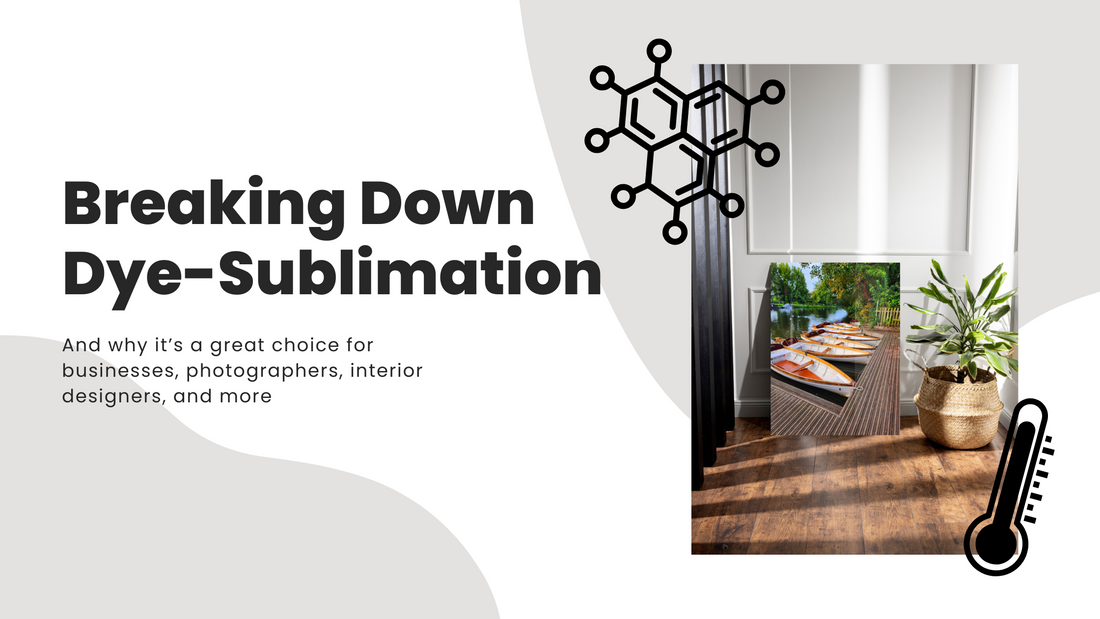Ever wonder how metal prints earned the reputation for vibrancy and durability? It's dye-sublimation, and we're teaching you all about it.
Breaking Down Dye-Sublimation
Dye - the ink used during printing to create the image
Sublimation - the process of changing a solid into a gas
In the world of metal prints, here’s what that looks like:
-
An image is first printed in reverse using special sublimation inks onto transfer paper.
-
The transfer paper is placed on a specially coated aluminum sheet. We use ChromaLuxe.
-
Under high heat (around 350–400°F) and pressure, the solid dyes on the transfer paper sublimate into gas.
-
The gas penetrates the polymer coating on the metal and bonds at a molecular level.
-
Once cooled, the dye becomes solid again, now embedded into the metal.
The result? A permanent, vibrant image that won't crack, fade, or peel over time.
Why Skip the Liquid Phase?
Sublimation skips the liquid stage entirely. This is important because:
-
No smudging or bleeding: Since the dye becomes gas and bonds directly with the metal coating, there’s no risk of ink running or shifting.
-
Molecular bonding = long-term durability: This isn’t just ink on the surface, it’s inside the surface. That makes it far more resistant to external damage than traditional printing.
-
Higher color fidelity: Because the dye fuses directly into the coating, the result is vibrant, continuous-tone color reproduction that rivals photographic quality.
The Role of the Polymer Coating
The aluminum used for the dye-sub process is specially coated with a clear polymer layer. This is what allows the sublimated dye gas to bond during the heat transfer.
Think of the coating as a sponge at the molecular level: it opens up under heat and pressure, absorbs the dye gas, and then seals it in as it cools.
Without this coating, the dye would just sit on the surface or not adhere at all.
Why It Works So Well for Metal Prints
This process creates metal prints with a few key scientific advantages:
-
Archival Quality: Because the dyes are embedded rather than printed on the surface, they’re less vulnerable to UV damage, humidity, and abrasion.
-
High Dynamic Range: Sublimation allows for fine tonal gradations and a wide color gamut, making it ideal for photography and high-resolution artwork.
-
No Surface Texture: Unlike canvas, the surface of a metal print is smooth and uninterrupted, which enhances sharpness and clarity.
For artists, photographers, and anyone seeking a long-term way to display imagery, understanding the science behind dye-sublimation explains why this format is so trusted in both creative and commercial settings.
Metalography has specialized in dye-sublimation metal prints for over 13 years. Our partnership with ChromaLuxe guarantees only the highest quality product.
Order yours today!

